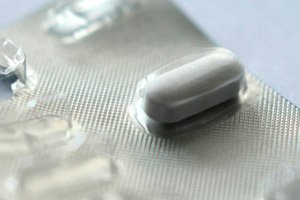
All iLive content is medically reviewed or fact checked to ensure as much factual accuracy as possible.
We have strict sourcing guidelines and only link to reputable media sites, academic research institutions and, whenever possible, medically peer reviewed studies. Note that the numbers in parentheses ([1], [2], etc.) are clickable links to these studies.
If you feel that any of our content is inaccurate, out-of-date, or otherwise questionable, please select it and press Ctrl + Enter.
Global antibiotic use will increase by more than 50% by 2030
Last reviewed: 02.07.2025
 ">
">Since the pandemic, there has been an increase in antibiotic consumption, especially in middle-income countries, raising concerns about antimicrobial resistance and global health challenges.
Key findings of the study:
The study, published in The Proceedings of the National Academy of Sciences, analyzes antibiotic consumption trends from 2016 to 2023, the impact of the COVID-19 pandemic, economic growth, and forecasts future use to inform policy to combat antibiotic resistance.
Background
Antimicrobial resistance is a major global problem, causing nearly 5 million deaths in 2019, with the highest mortality rates in low-income countries despite lower antibiotic consumption.
- Resistance arises from the overuse of antibiotics in human, agricultural and veterinary medicine, as well as from poor infection control.
- From 2000 to 2015, antibiotic consumption increased by 65%, driven mainly by low- and middle-income countries (LMICs), while high-income countries (HICs) remain the leaders in per capita consumption.
- Improved surveillance of antibiotic use and its relationship with resistance are needed to develop effective policies.
About the progress of the research
- The analysis is based on data from 67 countries obtained using the IQVIA MIDAS database of drug sales data.
- Antibiotics were measured in kilograms of active substances and converted into defined daily doses (DDD) according to the WHO classification.
- World Bank data were used to calculate consumption per 1,000 inhabitants per day, with countries divided into income groups: LMICs, UMICs (upper middle income countries) and HICs.
Research results
1. Increased consumption of antibiotics
- From 2016 to 2023, total antibiotic consumption in 67 countries increased by 16.3%, reaching 34.3 billion DDD.
- Average consumption increased by 10.6%, from 13.7 to 15.2 DDD per 1,000 people per day.
- In LMICs and UMICs, consumption increased by 18.6%, while in HICs it decreased by 4.9%.
2. Impact of the COVID-19 pandemic
- In 2020, due to the pandemic, there was a sharp decline in antibiotic consumption, especially in HICs (-17.8%), but in LMICs and UMICs it quickly recovered after the pandemic.
- The largest increases in antibiotic consumption were recorded in countries such as Vietnam, Thailand, Argentina and India.
3. Changes in consumption structure
- The most widely consumed drugs remained broad-spectrum penicillins, cephalosporins and macrolides.
- In MICs (including LMICs), there has been a significant increase in the consumption of macrolides and fluoroquinolones, as well as "last resort" antibiotics (eg, carbapenems and oxazolidinones).
4. Imbalance in the use of Access and Watch antibiotics
- Access antibiotics are used more in HICs, while Watch antibiotics predominate in LMICs, indicating deficiencies in stewardship of their use.
Forecasts
- As of 2023, global antibiotic consumption was 49.3 billion DDD, an increase of 20.9% since 2016.
- Without policy changes, consumption could increase by 52.3% by 2030, reaching 75.1 billion DDD.
Conclusions
- The increase in antibiotic consumption has slowed compared to the period 2008–2015, but remains significant.
- High-income countries are seeing a decline due to improved public health, while middle-income countries are seeing rapid post-pandemic growth.
- Strengthened regulation, equal access to antibiotics and investment in preventive measures such as vaccination, improved sanitation and diagnostics are needed.
- Global initiatives such as WHO's AWaRe are key to combating antimicrobial resistance.
